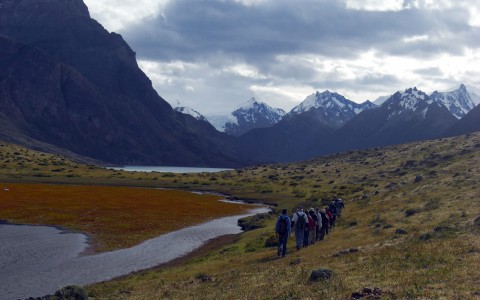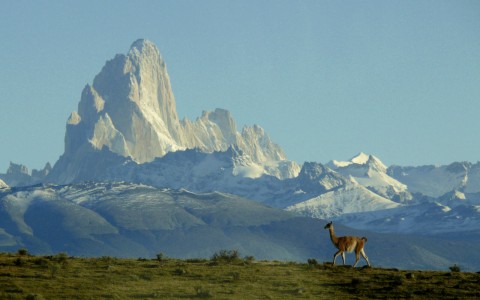Embracing Extremes in Patagonia
As a longtime Experience Designer and Guide for one of my favourite regions on the planet, Patagonia, I can hardly stop talking about it (or dreaming about this incredible place at the edge of the world, the southernmost tip of Chile and Argentina). It’s rugged, wild, immense, and expansive; it’s these reasons that make Patagonia such a special place to visit.

There are so many wondrous things about it that I love. Before you come here, know that this place is so different and unlike any other, and prepare to turn on your sense of adventure. Open your arms wide to the possibility of the unknown and expect the unexpected…in my opinion, it’s what makes for the best memories! Here are just a few reasons why I love Patagonia, and why you need to experience this incredible region for yourself.

Awaken Your Inner Explorer
When you get out into the wilderness of Patagonia, with so few people around, you can imagine how early European explorers felt when they traversed these regions for the first time. You’re in the company of explorers like Ferdinand Magellan, who first explored the Atlantic coast in 1502; Sir Francis Drake in 1577; and even the young Charles Darwin, who, in his early twenties, was part of the 1831 HMS Beagle scientific expedition under Robert FitzRoy, who lends his name to Mount Fitz Roy (famous as the silhouette for the Patagonia clothing brand).
I even think about Lady Florence Dixie, a Scottish noblewoman who travelled to Patagonia in 1878, wrote about her adventures, was one of the first Europeans to see the Laguna Azul, and even corresponded with Darwin himself. These eternal landscapes still stand untouched by time, and you’ll feel the same sense of discovery when you see them in person.

It’s Remote…Embrace It!
In this modern world of creature comforts, technology, and nearly everything at our fingertips, adjusting to the remote nature of Patagonia can sometimes be a bit of a challenge, but this very remoteness is one of the most amazing things about travelling here.
You may feel as if you are travelling back in time because the ‘modern things’ haven’t gotten ahold of people and things as much in Patagonia, because it’s just that far out. The hardy people who live here have adapted to it and made a life out of this; the vastness and sparsely-populated nature of the land is part of the experience, as opposed to an inconvenience.

Discover A New Side of the Andes
On our Lakes & Volcanoes Active Expedition, explore the serene Lakes Region of Argentina, the Alpine feel of Bariloche, the warmth of the Mapuche culture as you paddle, trek, and hike your way through to the volcanoes of Chile.
DETAILED ITINERARYExperience All Four Seasons…In One Day
 Throw out what you know about the weather and the seasons; here in Patagonia, you can experience microclimates that shift unpredictably, and all four seasons in one day: wind, hail, rain, snow, sun…you name it, you are bound to experience it—whether it’s summer in the Southern Hemisphere or not.
Throw out what you know about the weather and the seasons; here in Patagonia, you can experience microclimates that shift unpredictably, and all four seasons in one day: wind, hail, rain, snow, sun…you name it, you are bound to experience it—whether it’s summer in the Southern Hemisphere or not.
It goes without saying that the mighty wind, “Escoba de Dios”—a nickname for ‘God’s Broom’—is so strong that it causes trees to grow horizontally. On a recent hike, the gales began to blow, and we all had to sit down and hold on to something to stay grounded. (In fact, what we experienced that day wasn’t much by Patagonian standards!). Such is the primal force of nature, something to be in awe of and have respect for.

A Rich History
The story of humans attempting to make the most of this (seemingly) uninhabitable region is something to appreciate. From the first indigenous peoples who inhabited the region, the nomadic Tehuelches; to Spanish colonizers; Welsh immigrants attempting to preserve their culture and language away from Britain; Portuguese, Argentinian, Chilean and even Croatian settlers…there has always been a rugged and hardy edge to people’s attempts to tame this wildest of wild regions. Mining, whaling, livestock (especially sheep farming), and even agriculture have been ways in which people have participated in the economy.

The Landscape is the Star of the Show
Volcanoes. Glaciated lakes. Rising granite peaks and giant boulders. Verdant grasslands and pampas; high steppes; varied brush, and the most massive glacier that you will ever see…the Perito Moreno glacier. I think about the ever-changing light shifting through the fast-moving clouds, and an explosion of stars in the night sky, with the Southern Cross often viewable. Yes, Patagonia is one region, but it covers such a wide area…expect to see a real variety of terrain, enough to make everyone on your Instagram feed jealous. (Unless the weather kicks up a fuss…)

MORE FROM + Patagonia
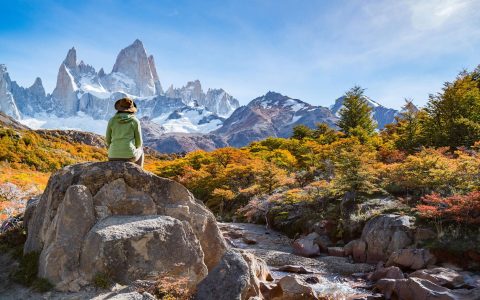
Insider’s Guide: A Few of Our Favourite Things to do in Patagonia
Patagonia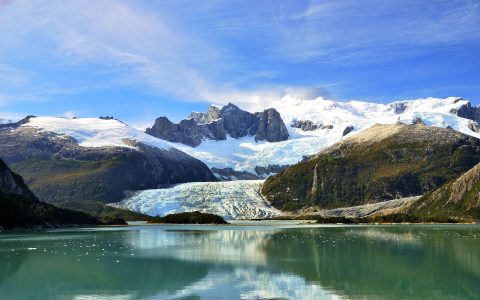
In Deep: What You Need to Know About Patagonia
Patagonia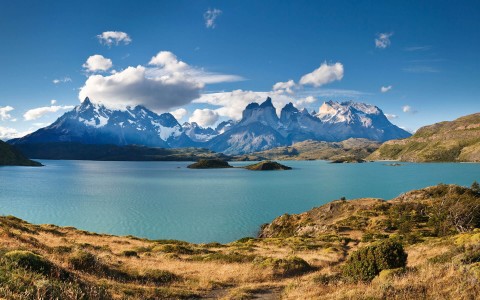
Notes From the Road: Patagonia Walking
Patagonia